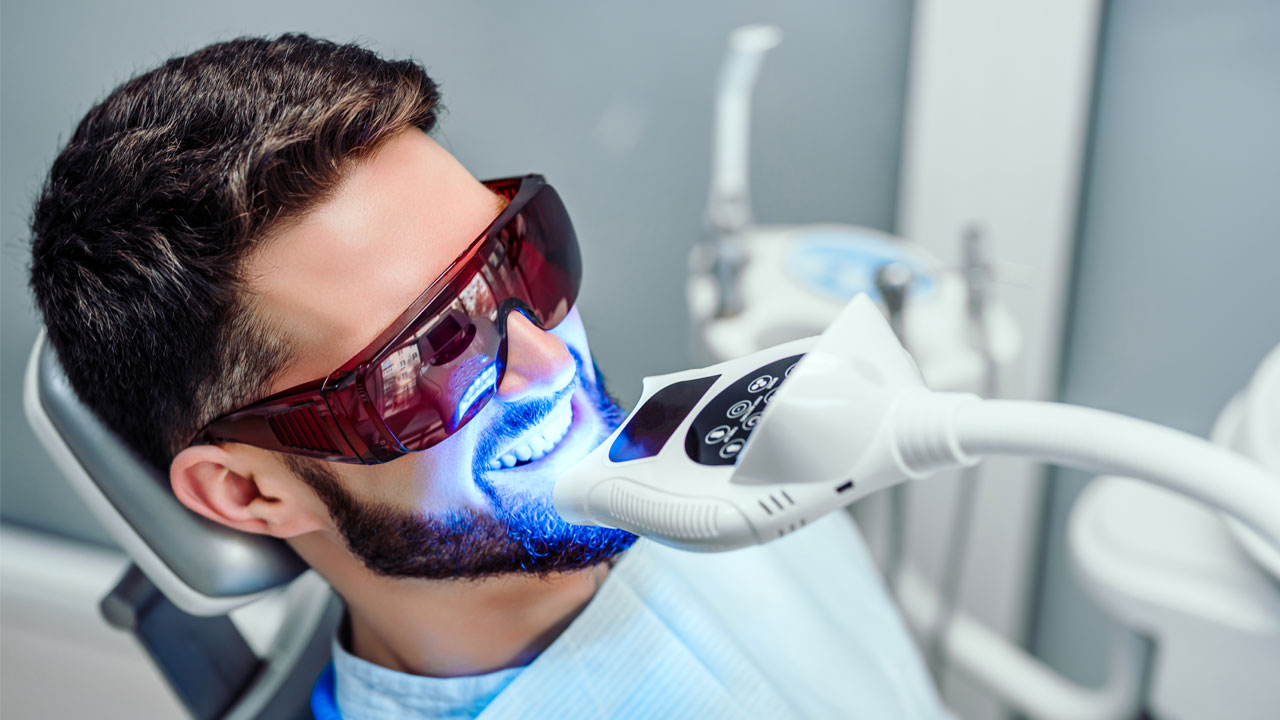Tooth Whitening: Procedure, Types, Side Effects and Risks

Tooth whitening is performed to lighten tooth color, not necessarily render teeth brilliant white as the term might suggest. It is achieved by changing the color or removing the formation of stains. Tooth bleaching is when chromogens on or within the tooth are chemically degraded. Most whitening products have hydrogen peroxide as their active ingredient.
When this compound diffuses into the tooth, it serves as an oxidizer that breaks down to generate free radicals. These are unstable and attach to organic pigment molecules in the tooth enamel, resulting in small, less intensely pigmented components. These smaller molecules reflect less light, bringing about a “whitening effect.”
Products Used for Tooth Whitening
Different products are available to remove stains. Dentists diagnose the location, type, and intensity of the tooth discoloration in order for their whitening treatments to be successful. Compound concentration and duration of treatment (exposure) determine the extent of tooth whitening.
Causes of Tooth Discoloration
When the enamel, the outermost layer of the tooth has been affected, discoloration occurs. Its color, thickness, and smoothness usually depend on genes. A thinner layer of enamel highlights the dentin’s color reflection. Because it is perforated, this enamel layer absorbs small stain-causing particles that impact its color.
Some of the most common reasons for tooth discoloration and ensuing staining include tobacco use, consumption of staining foods and beverages, poor or improper dental hygiene, including poor tooth brushing technique, trauma or injury, exposure to iron salts, aging, and tetracycline (tri-cycle) antibiotics.
Teeth whitening cannot remedy the dentin, only the discoloration. Stains caused by aging are difficult to treat using this procedure.
Perception of Tooth Color
Absorption and reflection of light by the tooth can be affected by a number of factors including specular reflection at the tooth surface, transmission of light through the tooth, diffuse light reflection at the surface, enamel mineral content, absorption and scattering of light within the dental tissues, enamel thickness, the color of the dentin, eye fatigue, subjective perception, type of light, and the presence of internally and externally caused stains.
Teeth will get darker as you grow older. Normally, this isn’t a cause for concern. It is attributed to thinning of enamel and secondary dentin formation due to tooth wear, contributing to an increase in yellowness and a corresponding (often substantial) decrease in lightness.
Types of Tooth Whitening
Tooth whitening is often available in two different methods, including at Hinsdale Dental: in-office whitening procedures and procedures to be performed at home. The latter involves a gel solution called NiteWhite ACP, which is taken home in a custom-fit tray and applied.
Hinsdale Dental uses the certified, 100% safe Phillips Zoom for its whitening procedures. This product brings gleam back to the teeth without removing the protective enamel, which is what most teeth whitening treatments entail. Our patients often see results within a day of the in-office treatment, and sometimes in as little as one hour.
The take-home kit NiteWhite ACP Whitening reduces sensitivity, rebuilds the enamel layer, and improves the appearance. The application method is easy and simple.
Warnings and Side Effects
Please keep in mind that although it demonstrates lasting results, tooth whitening often needs to be carried out in more than one session. This is a complex procedure that requires follow-up sessions to maintain a brighter tooth color. While teeth whitening procedures are considered completely effective and safe when they are performed by a certified dentist, there might be some side effects in rare cases. These are usually due to the regular exposure to whitening agents and include temporary tooth sensitivity, mild gum irritation, and mild tooth and gum pain.
Return to Blog